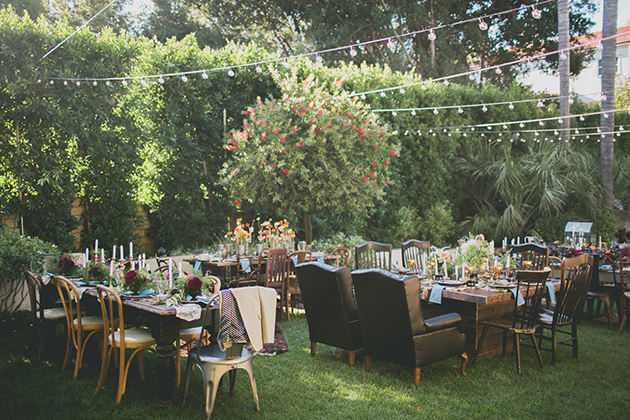
Photo: Studio Castillero
No part of wedding planning brings up more politics and family drama than the seating chart. You’d think that where people have dinner (a dinner that someone else is paying for, no less) wouldn’t be such a point of contention, but with all the effort you’ve put into creating a fabulous party, making sure people have a great time all evening is probably pretty high on your list of priorities! Thankfully, our experts have a few tips that will help you decide who sits where — with a little less drama.
Whether you’re high-tech and are using a seating chart app or prefer the low-tech method of Post-It tabs and sheets of paper representing each table, the best way to start planning your seating chart is to get organized. Look at the floor plan of your reception and, based on the location of the dance floor and the head table, decide which tables will be for your VIPs (most likely your parents and immediate family if you’re seating your wedding party at the head table).
When it comes to who sits at your parents’ tables, pass the responsibility on to them. Let them know exactly how many seats are available at their tables, and allow them to select who they’d like to have dinner with. Then, seat anyone who isn’t at your parents’ tables (such as other family members or your parents’ friends) at a table nearby so they can easily mingle.
Then, look at everyone else who is attending. Group them by category (your childhood friends, his college frat brothers, etc.) and start to build tables from there. Don’t have enough people to fill a table? Think about which groups will get along, and do some creative combining — you never know who will become fast friends! When it comes to cousins in your age group, you can either seat them with relatives they know, or mix them in with your friends so they’re with people their own age. And definitely skip the singles table! Grouping your unattached friends together will create an awkward situation where you seem to be playing matchmaker, which will make the night less fun, not more so. Instead, arrange tables that are a combination of friends, couples, and singles so everyone is comfortable. If there’s a history or some drama that you’re hoping won’t cause a problem at your wedding, seat the parties involved at different tables (and ideally on different sides of the room if possible).
The location of each table is important, too. Think about where the band or DJ will be playing, and where speakers will be set up. Put your younger guests at tables closer to the music, and older guests a little further away so they’re not overwhelmed by the volume.
See more: How to Have a Successful Seated Dinner Without a Seating Chart
